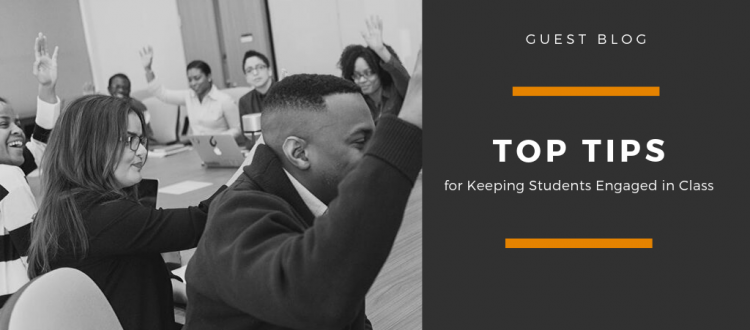Top Tips For Keeping Students Engaged In Class
By Guest Blogger Kena Johnson
Have you ever had trouble keeping your students’ attention? If so, you’re not alone. A report published by EdWeek found that student engagement decreases as children get older, bottoming out at 32% engagement by the 11th grade — one of the most crucial times for students.
The thing is, students want to excel, but some have difficulty doing so. This can be a result of plenty of factors, such as home problems, issues with teachers or subjects, lack of genuine interest, and various other personal circumstances. Sometimes, it’s as simple as not having the energy to engage in class. The report states that students felt this way because as they grew older, they felt as if the adults in their life cared less. And in turn, they saw less value in their work. Fortunately, there are plenty of strategies
educators can implement in order to tackle this problem and develop excitement and engagement oncemore in the classroom. Here, we’ve outlined a few key ways you can start:
Have a positive demeanor
High levels of engagement can be brought on simply by having a positive, enthusiastic demeanor. The most basic influence on a student’s level of engagement is a teacher’s conduct, as this helps establish a tone that encourages student interest.
when teaching. Try to pair constructive criticism with praise, so that they know their effort is appreciated and great nevertheless.
Critical thinking is a skill that educators can not overemphasize. After all, researchers at the University of Houston have linked it to the highest levels of learning. Thankfully, critical thinking can be developed through various activities, like asking them deep, thought-provoking questions in pairs or in groups, or by proposing relevant, real-world problems for which they have to discuss potential solutions.
Activities with game-like characteristics are likely to keep students engaged — whether it’s through their competitive streak coming out or simply the desire to have fun. LearningPlunge’s Director of Learning Barb Bailey touches on this in her article on the ‘4 Benefits of Game-Based Learning’, citing social-emotional growth and the potential for gaining feedback.
While it’s true that not all students learn the same way, their environment plays a huge role in their development. Creating an environment where students feel safe to learn is vital.
The key is to make them feel their presence and work are both valued.
There are plenty of strategies to keep your students engaged — and finding out what works best for your class will help keep things interesting. The more interactive and engaging a class is, the more students will enjoy what they’re learning.
Kena Johnson is a mother, tutor, and aspiring writer all-in-one. She has a passion for teaching kids — one that she actively shares to the world. When she isn’t teaching, writing, or being a mother to a pair of amazing twins,
she’s sticking her nose into a book or going to the gym near her house in Boston, Massachusetts









